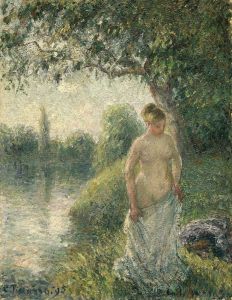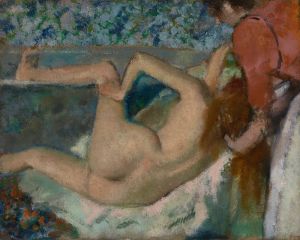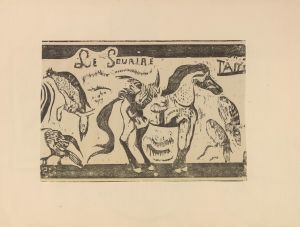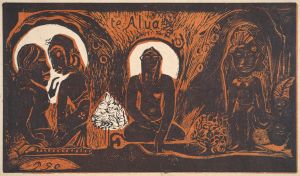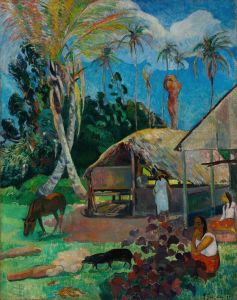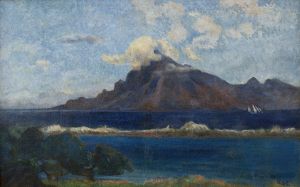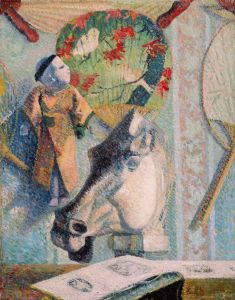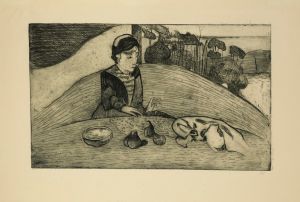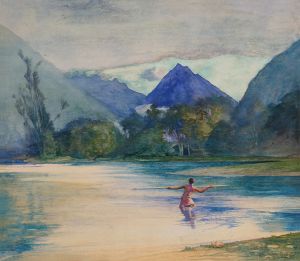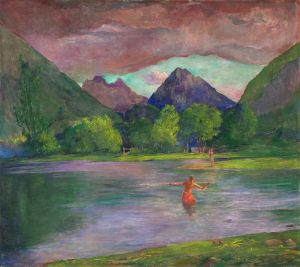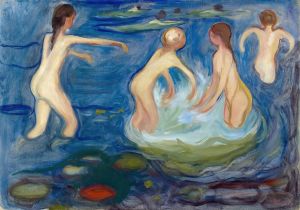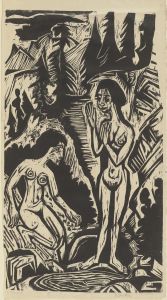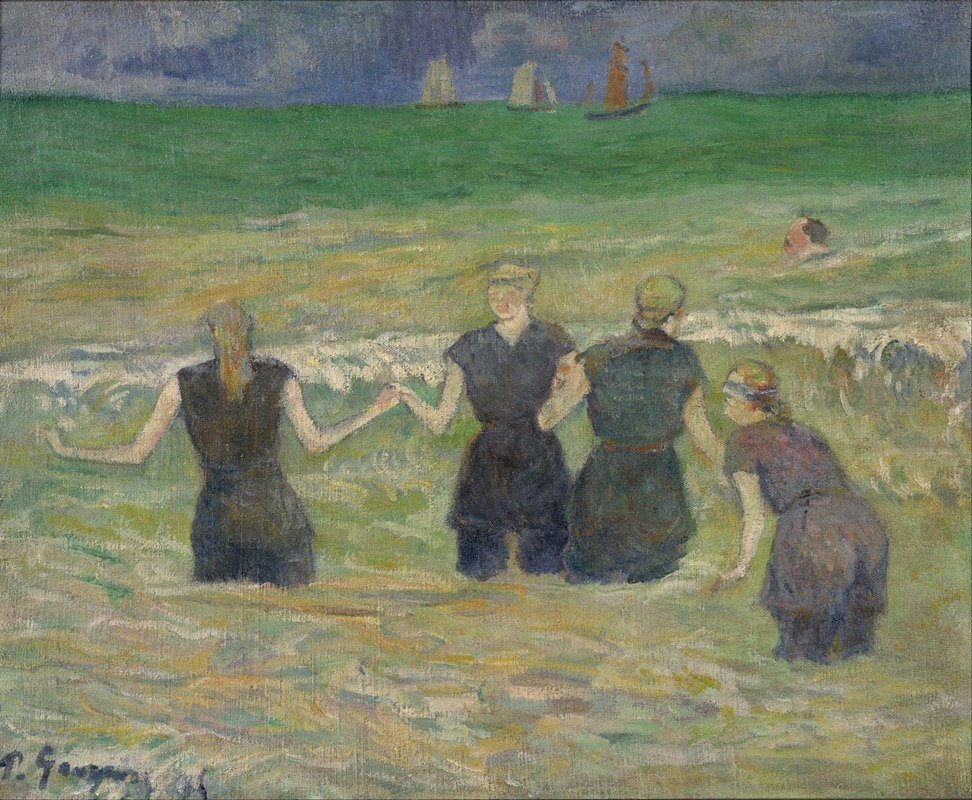
Women Bathing
A hand-painted replica of Paul Gauguin’s masterpiece Women Bathing, meticulously crafted by professional artists to capture the true essence of the original. Each piece is created with museum-quality canvas and rare mineral pigments, carefully painted by experienced artists with delicate brushstrokes and rich, layered colors to perfectly recreate the texture of the original artwork. Unlike machine-printed reproductions, this hand-painted version brings the painting to life, infused with the artist’s emotions and skill in every stroke. Whether for personal collection or home decoration, it instantly elevates the artistic atmosphere of any space.
"Women Bathing" is a painting by the French Post-Impressionist artist Paul Gauguin. Created in 1892, this work is part of Gauguin's Tahitian period, during which he sought to escape European civilization and immerse himself in what he perceived as the more primitive and pure culture of Tahiti. The painting is also known by its French title, "Femmes au bain."
Gauguin arrived in Tahiti in 1891, seeking to find an unspoiled paradise and to reconnect with nature and the primitive aspects of human existence. His time in Tahiti had a profound impact on his artistic style and subject matter. "Women Bathing" reflects his fascination with the local culture and his desire to capture the essence of Tahitian life.
The painting depicts a group of Tahitian women bathing in a natural setting. The composition is characterized by its vibrant colors, simplified forms, and strong outlines, which are typical of Gauguin's style during this period. The women are shown in various poses, some standing, some sitting, and others reclining, creating a sense of movement and fluidity. The lush tropical landscape, with its rich greens and blues, serves as a backdrop to the scene, enhancing the sense of tranquility and harmony with nature.
Gauguin's use of color in "Women Bathing" is particularly noteworthy. He employed a bold and unconventional palette, using colors not necessarily found in nature to convey emotion and atmosphere. This approach was influenced by his interest in Symbolism and his desire to move away from the naturalistic representation of reality. The painting's flat areas of color and lack of traditional perspective also reflect Gauguin's interest in the art of non-Western cultures, particularly Japanese prints, which he admired for their simplicity and directness.
"Women Bathing" is also significant for its portrayal of the female form. Gauguin's depiction of the Tahitian women is idealized, reflecting his romanticized view of the island and its inhabitants. The women are presented as serene and graceful, embodying a sense of natural beauty and purity. This idealization, however, has been the subject of much critical debate, with some scholars arguing that Gauguin's portrayal of Tahitian women was influenced by colonialist and exoticist attitudes.
The painting is part of the collection of the National Gallery of Art in Washington, D.C. It is considered one of Gauguin's masterpieces and an important example of his work during his Tahitian period. "Women Bathing" continues to be celebrated for its innovative use of color and form, as well as its evocative depiction of a moment of everyday life in Tahiti.
In summary, "Women Bathing" by Paul Gauguin is a significant work from the artist's Tahitian period, reflecting his fascination with the local culture and his innovative approach to color and form. The painting captures the serene beauty of Tahitian women in a natural setting, embodying Gauguin's romanticized vision of the island and its people.





